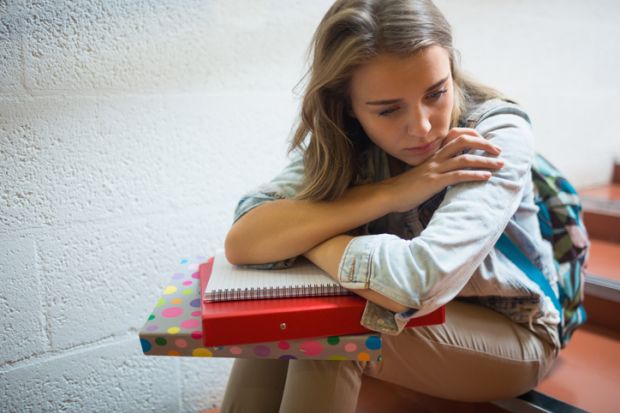
Social Exclusion in Schools: It Really Hurts!
Social exclusion is a serious issue in schools that can lead to severe emotional and psychological consequences for students. When children feel left out or isolated, it can hinder their ability to learn and develop social skills. Exclusion can occur in various forms, ranging from not being invited to play with a group to more subtle behaviors like ignoring or dismissing someone’s contributions. It is essential for educators, parents, and students alike to recognize the signs of social exclusion and take proactive steps to create an environment where everyone feels valued and included.
Fostering a sense of belonging in schools begins with building a culture of respect and empathy. Teachers can implement programs that encourage students to share their experiences and feelings, allowing them to understand diverse perspectives. Lessons that highlight the importance of inclusion and the impact of exclusion can be transformative. Engaging students in team-building activities can help break down barriers and promote friendships among classmates, ensuring that no one feels isolated.
Peer support plays a critical role in mitigating social exclusion. Establishing buddy systems or mentorship programs can help students who might struggle to connect with others. When older students take younger ones under their wing, it creates a safe and supportive environment where all students feel they belong. Additionally, involving students in developing school-wide anti-bullying initiatives can empower them to take ownership of their school community and promote a more inclusive atmosphere.
Parents also have a crucial part to play in addressing social exclusion. Open communication between parents and teachers can provide insights into a child’s social experiences. Encouraging children to talk about their friendships, challenges, and feelings at home can help parents identify issues of exclusion early. Simple discussions about kindness, inclusion, and the importance of supporting peers can instill values that children carry with them into their school life.
Finally, schools should celebrate diversity through cultural events, clubs, and activities that reflect the wide range of backgrounds and experiences within the student body. When students see their cultures and identities represented and appreciated, they are more likely to feel a sense of belonging. By promoting an inclusive culture that values every individual, schools can significantly reduce instances of social exclusion.
In summary, addressing social exclusion in schools requires a concerted effort from every member of the school community. By fostering empathy, creating peer support systems, engaging parents, and celebrating diversity, schools can create an environment where every student feels included and valued. Together, we can build a school culture that promotes kindness and understanding, ensuring that no child is left behind.
#SocialExclusion #FosterInclusion #Belonging #SchoolCommunity #AntiBullying #EmpathyInEducation

Principal Testimonials for Anti-Bullying Speaker Jim Jordan
Principal Sarah Martinez – Riverside Elementary School
“Jim Jordan’s presentation was transformative for our school community. Within just two weeks of his visit, we had seven students come forward to report bullying incidents that had been happening for months without our knowledge. His ability to connect with students across all grade levels was remarkable – from our youngest kindergarteners to our sixth graders, everyone was engaged and clearly understood his message about speaking up and supporting one another.
What impressed me most was how Jim created such a safe, non-judgmental environment during his presentation. Students felt empowered to break their silence, and we were able to address several serious situations that we had no idea were occurring. Our school counselor reported a 40% increase in students seeking help in the month following Jim’s visit. The ripple effect of his message continues to strengthen our school culture six months later.”
Principal Michael Chen – Oakwood Middle School
“In my 22 years as an educator, I’ve seen many anti-bullying presentations, but Jim Jordan’s approach was unlike anything we’ve experienced. His interactive storytelling and real-world examples resonated deeply with our 6th-8th grade students. The most significant impact came three days after his presentation when a group of students reported a cyberbullying situation involving social media harassment that had been escalating for weeks.
Jim’s emphasis on being an ‘upstander’ rather than a bystander clearly struck a chord. We saw a complete shift in our school’s reporting culture – students who previously stayed silent began advocating for their peers. Our disciplinary referrals for bullying actually increased initially, which sounds negative but was actually positive because it meant hidden incidents were finally being addressed. By the end of the semester, overall bullying incidents had decreased by 35%, and our school climate surveys showed the highest sense of safety ratings we’ve ever recorded.”
Principal Jennifer Thompson – Lincoln High School
“Jim Jordan brought a level of authenticity and relatability that immediately captured our high school students’ attention. His presentation tackled the complex social dynamics that teenagers face, including social media bullying, exclusion, and peer pressure. What happened next was unprecedented in my experience as principal.
Within the first week after his visit, our guidance department received reports about three separate incidents that had gone unreported: a student being harassed for their sexual orientation, another being excluded from lunch groups for months, and a case of students spreading harmful rumors online. Jim’s message about the courage it takes to speak up and the responsibility we all have to create inclusive environments clearly resonated.
The most powerful moment came during our follow-up assembly two months later, when several students voluntarily shared how Jim’s presentation had given them the confidence to seek help and support their classmates. Our anonymous school climate survey showed a 50% increase in students who felt confident reporting bullying incidents. Jim didn’t just give a presentation – he sparked a cultural shift that made our school a genuinely safer place for every student.”